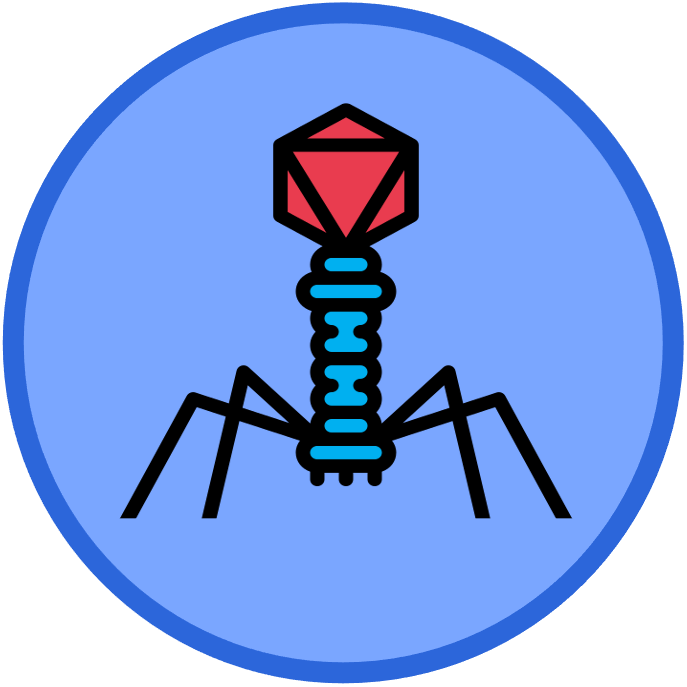

Viruses (AHL)
AHL Content Statements
-
A2.3.1
Structural features common to viruses
-
Relatively few features are shared by all viruses: small, fixed size; nucleic acid (DNA or RNA) as genetic material; a capsid made of protein; no cytoplasm; and few or no enzymes.
-
A2.3.2
Diversity of structure in viruses
-
Students should understand that viruses are highly diverse in their shape and structure. Genetic material may be RNA or DNA, which can be either single- or double-stranded. Some viruses are enveloped in host cell membrane and others are not enveloped. Virus examples include bacteriophage lambda, coronaviruses and HIV.
-
A2.3.3
Lytic cycle of a virus
-
Students should appreciate that viruses rely on a host cell for energy supply, nutrition, protein synthesis and other life functions. Use bacteriophage lambda as an example of the phases in a lytic cycle.
-
A2.3.4
Lysogenic cycle of a virus
-
Use bacteriophage lambda as an example.
-
A2.3.5
Evidence for several origins of viruses from other organisms
-
The diversity of viruses suggests several possible origins. Viruses share an extreme form of obligate parasitism as a mode of existence, so the structural features that they have in common could be regarded as convergent evolution. The genetic code is shared between viruses and living organisms.
-
A2.3.6
Rapid evolution in viruses
-
Include reasons for very rapid rates of evolution in some viruses. Use two examples of rapid evolution: evolution of influenza viruses and of HIV. Consider the consequences for treating diseases caused by rapidly evolving viruses.



